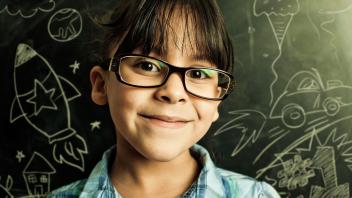- Literacy in the Sciences
Find tip sheets for parents (in English and Spanish) on topics like making predictions, recording observations, patterns and categorizing, and inference; great science and math books for kids; articles about higher order thinking and building background knowledge; links to online science resources for children; PBS Kids science-themed shows; and more.
- Start with a Book
What does your child love to explore and learn about? Explore dinosaurs, bugs, birds, planes, our green world, inventors, money, numbers and measuring, time, oceans, rivers and ponds, weather and the night sky through fiction and nonfiction books, hands-on activities, apps and more.
- Reading Adventure Packs
Our themed Reading Adventure Packs encourage hands-on fun and learning centered around paired fiction and nonfiction books. STEM topics include robots, archaeology, dinosaurs, hibernation, trees, farms, rocks, weather, bees, flight, stars, rivers, oceans and more.
- Science Notebooks
Keeping a science notebook encourages students to record and reflect on inquiry-based observations, activities, investigations, and experiments. Science notebooks are also an excellent way for students to communicate their understanding of science concepts, and for teachers to provide students with feedback.
- Literature-Based Teaching in Science: Poetry Walks
Read and discuss poetry with nature imagery with students. Take students on a poetry walk around the school, neighborhood, or community to observe and collect sensory images from direct experience with nature: the sights, sounds, smells, and textures of things outdoors. Students can take a poetry journal with them to write down words as they observe, listen, smell, and touch things outside the classroom.
- Literature-Based Teaching in Science: Q&A Reports
Using students’ questions as a basis for investigations in science education is an effective teaching strategy. Not only do students pose questions they would like answered, but they are asked to find ways to answer them. This article also recommends nonfiction science books that use a question and answer format to find information and model how to communicate what you know.
- Literature-Based Teaching in Science: What’s in the Sky?
When students practice observing in science, they use their senses to collect information about objects and events related to a question, topic, or problem to solve in science. Learn some strategies to help students organize and analyze their data through presentations, sharing, and discussion.
- Diagrams, Timelines, and Tables
Concepts of print should be expanded to include graphics, with instruction in how to read and analyze graphical devices such as diagrams, timelines, and tables. Learn more about how to teach young students to read and understand visual information.
- Introducing Science Concepts to Primary Students Through Read-Alouds
Multiple exposures to a related concept across different stories gave students more time to build a mental representation of important ideas. This evidence suggests that moving beyond a single text as a source for building students’ understanding is an important instructional approach.
- Supporting Scientific Language in Primary Grades
The framework provided in this article for viewing students’ science writing offers teachers the opportunity to assess and support scientific language acquisition.
- A Primary Grade Science Unit Using the Language Arts/Literacy Common Core State Standards
With the Common Core, literacy is intentionally taught within content areas. See what a CCSS mini-thematic unit in science might look like for children in the primary grades.
- Content Area Literacy: Individualizing Student Instruction in Second-Grade Science
The individualized instruction described in this study incorporates flexible, homogeneous, literacy skills-based grouping, use of leveled science text, and explicit use of discussion and comprehension strategies.
Reprints
You are welcome to print copies or republish materials for non-commercial use as long as credit is given to Reading Rockets and the author(s). For commercial use, please contact [email protected].
